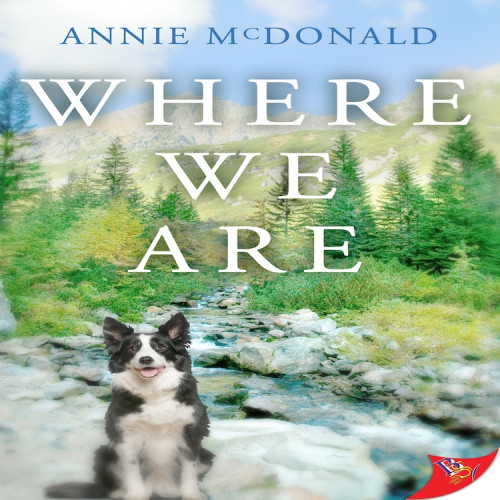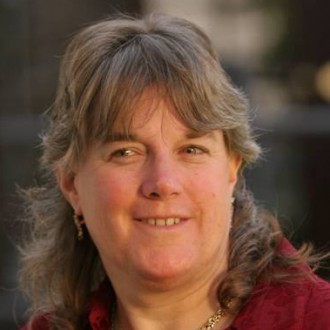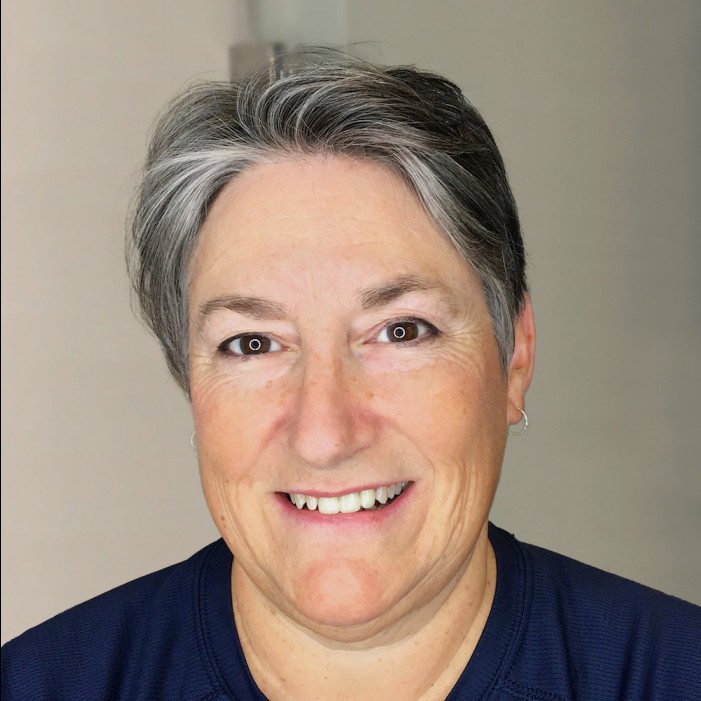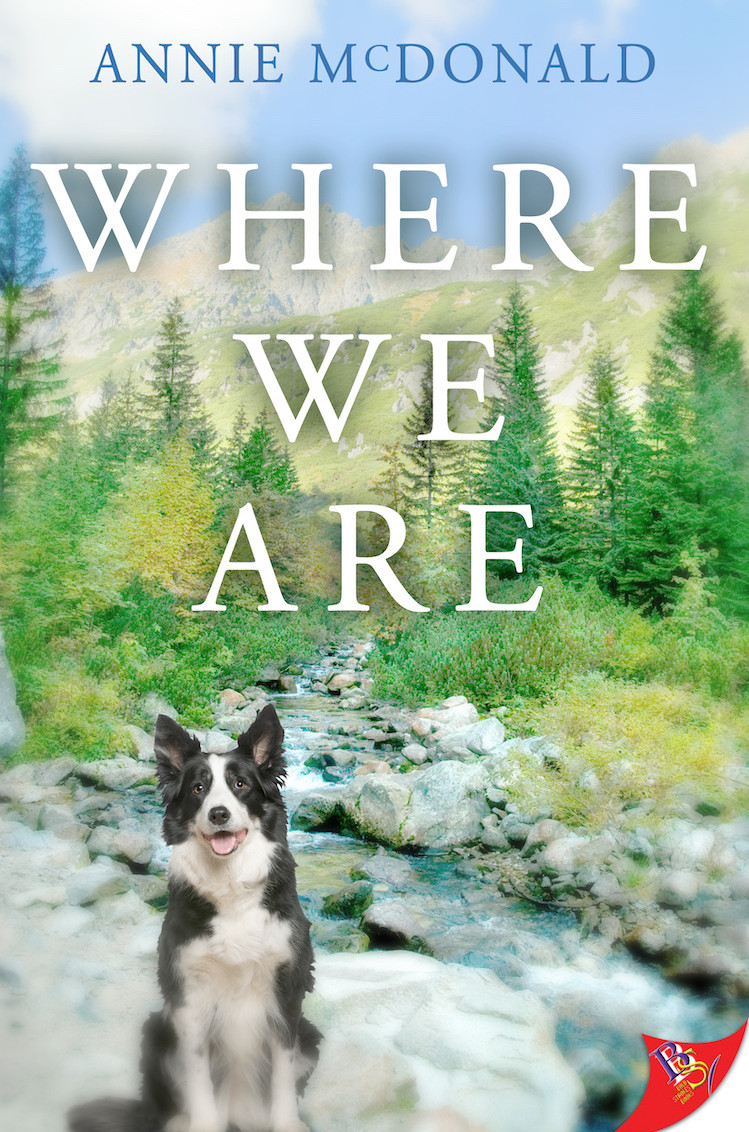Jeannie Levig interviews Annie McDonald:
Hello, Annie, and congratulations on your debut novel, Where We Are, that was released in December. First of all, how are you feeling about the release and being a published author?
Thanks, Jeannie! It feels truly surreal. The whole experience came as a complete surprise. Not only to friends and family who were like, “What? You wrote a book? Really?” but also to myself. I didn’t plan this new adventure at all.
Did you have any kind of celebration for yourself when you received the contract offer and then later when the book came out?
Honestly, I was in shock through the whole process. I’m sure we’ve all felt at some point that we’re imposters, and that somehow, someone is going to pull back the curtain and reveal us not for who we truly are, but for how we feel when we’re most vulnerable. I put no thought into the fact that people, strangers, might read what I’d written. I probably put more of myself into Where We Are than I should have. But I suppose if I hadn’t, it wouldn’t have been received as well as it has been. Until the book was in my hand, I didn’t believe it was happening. Then a few corks were popped, and more than a few tequila shots were, well, shot!
Some authors have been coming up with stories and writing them down since they were children, and for others, writing kind of sneaks up on them at some point. How did it happen for you, and how long have you been writing?
I guess you could say I’ve had a fascination with writing as long as I can remember. Even down to the way that letters fit together to make words. And words fit together to make sentences. In school, many teachers had that conversation with my parents, that they should direct me to a career that involved writing. That might have been because I was the kid who wrote the notes that got passed around the classroom behind the teacher’s back, and they wanted me to be more constructive with my talent.
When I was older and had something a bit more substantial to say, I wasn’t ready to open myself up, and to truly release my inner critic. I ended up with a wonderful career on the back end of publishing (acquisitions and marketing). I loved working with my authors, but never once thought I would be one. Then someone challenged me to complete NaNoWriMo (National Novel Writing Month), and that jump-started my process.
A lot of readers seem to be interested in how a writer puts a story together and into words, so I always ask the pantser versus plotter question. What kind of writer are you? Are you a plotter or a pantser, or something in between?
In spite of my one-off NaNoWriMo experience, I’m actually a plotter. I am systemic in organizing the events so that they are cohesive. I have sticky notes with plot points all over my office wall.
That said, author friends told me that regardless of the planning I did, I needed to be prepared to re-envision as I wrote because sometimes the characters have their own ideas of what should happen. As a control enthusiast with plenty of ego, I doubted that could possibly be true. Now I think it’s like believing in ghosts; you’re skeptical until you see one. I was shocked by how blatantly and often my characters undermined my plans, and how I was constantly forced to unstick and restick all of those carefully planned pieces when Sid did her own thing, or Mia said her own words, or the feelings they had were not what I’d imagined. It was incredible. And it still is.
And do you feel as a writer you are more character driven or plot driven?
I think I am character driven. I think an interesting plot is a tremendous asset, but I don’t believe that romantics fall in love with plots as much as they do with characters.
This is something else that surprises me as I write: I fall in love with my characters, and when I finished my final draft of the manuscript for Where We Are, there was a great sense of anguish. I had to text my friend and fellow newbie BSB novelist Nan Higgins, to ask her to command me to hit send because I didn’t want to let Sid and Mia go out into the world. And I’ll likely need another push when I put the final touches on When Sparks Fly, my next story!
One final word on the notion of characters—I hope that the setting feels like a character in some way for readers. It drives a great deal of my stories. I love the diversity, the ruggedness and the gentleness of Canada, and I want to share the quality and complexity of the landscape in each book I write. Hopefully my stories will entice readers who have never visited to make travel plans that include this amazing country.
As a reader, I’m a sucker for an interesting and/or well-crafted writing style. I noticed in Where We Are you seem quite adept with metaphors and similes. One that really struck me was when you were describing Sid’s voice, you said, “But what a voice it was. The velvety alto carried through the night air like tumbleweeds across sand before hanging like a perfectly struck barely below C chord on an acoustic guitar.” And there were others equally as lyrical throughout the book. Is it difficult for you to come up with such descriptions, or does it come to you naturally?
For me, writing is about creating connections. Doubly so when writing a romance. I mentioned earlier that I look for cohesion, and I think metaphors and similes can be like glue in that pursuit. I love that line you just quoted because the expected incongruence of guitar chords, tumbleweeds, and Sid’s voice somehow creates a single cohesive response in the reader. At least, I sure hope they do! Sid’s voice in my head always sounded a bit like Scarlett Johansson.
Is there anything you’d like to share about your writing style or process that we haven’t touched on?
I think I’d advise anyone who is thinking about a good story to simply sit down and put fingers to pen, or keyboard. Yes, it takes discipline. But you might surprise yourself. I’d also advise that you support your writing habit by surrounding yourself with a great publisher, and a smart editor. I have both, and I’m always grateful.
Finally, I’m terribly annoying to be in a relationship with while I’m in creative mode. My characters are always with me, chewing on my ear, so to speak. Friends—and especially a partner—who are patient and understanding are vital.
Now, let’s talk about your debut novel, Where We Are, more specifically. Where did this particular story idea come from and how long did it take you to write it from the start to when you sent it off as a submission? Was it always your goal to submit it for publication?
I have always loved stories set in the West. Like Shane. And the series Godless. I dreamed of being a cowboy. It’s the landscape that beckons me. It’s massive. And isolating. And strangely full of hope. Similarly, Canada inspires me.
I mentioned NaNoWriMo earlier; my goal in that challenge was to commit fully to silencing my inner critic. Whatever fell onto the page was left there. I wrote stream-of-consciousness, with zero planning and absolutely no revisions. I completed the challenge by end-November and three days after that, I missed writing. So I sat down and planned Where We Are. Just over a month later, the first draft was done. It would’ve stayed that way too, but friends encouraged me to submit it for publication, and understanding the business as I did, I wondered how I would handle rejection. The story is personal, after all. I rationalized that even if a publisher said no thanks, nothing would be lost since I had so much fun writing the story, and I loved the characters. As a huge Radclyffe fan, I decided only to send it to Bold Strokes Books. As you can imagine, Jeannie, I just about fell out of my chair when I received an acceptance.
I really enjoyed the story, and being a dog person and having had and loved several herding dogs, I especially liked that Mia was a trainer of herding dogs. I’ve read a lot of lesbian fiction and have come across characters that train dogs, but the herding element seemed unique. Does that come from your own life experience? If so, would you elaborate on that for us? If not, how and why did you decide to incorporate that specific type of training into Mia’s character?
First of all, I am also a dog lover, though for lifestyle reasons I spent most of my adult life with a cat or two. When I was a kid, though, I had a very important German shepherd in my life. King joined our family already impeccably trained, so I never gave a lot of thought to how…not obedience, but trustbetween the dog and his family came to be. A couple of years ago, as I was beginning to write, a man in my local LGBTQ meet-up group mentioned that he trained herding dogs for competitions. I recalled then that when I lived on a farm, the working dogs were amazing, but I’d never given much thought to how the human-working dog interaction came about.
When Mia first came into vision, she was grieving. From personal experience I know that one of many challenges for someone facing loss is keeping the heart open. It is too easy to shut it down. So it occurred to me how important pets are to all of us, not only because they depend on us for virtually everything—so we can’t avoid staying engaged—but most importantly because their very presence in our lives is magically sustaining. We feel their love for us. Mia needed to feel love. And she needed to feel control, because her life had been shattered. Dog training seemed a perfect vehicle to give her both. I’m absolutely thrilled to report that I once again have a dog in my life. Rey is a delightfully ill-behaved but entirely lovable black Lab, and I have no plans to train her.
I also found Sid to be rather multilayered in her makeup as a character. The combination of her being a knowledgeable and somewhat rough cattle rancher as well as being the curator of an art gallery and fitting into both professions made her very intriguing, in my opinion. Do you have firsthand knowledge and experience with both of these worlds, or did you have to research one or both of them. If the latter, how much research did you have to do?
Aside from having a deep love of the Group of Seven, and having seen many of the originals and sketches they created, I don’t have firsthand knowledge of the gallery world. Sid’s gallery is an ideal. It’s what I wish all galleries to be: entrusted keepers of the stories behind the works of art, and dedicated partners with the artists and the collectors who love those artists. I first encountered the Group of Seven at University of Toronto (my alma mater) during a course on Canadian Art. I was formulating some ideas for a research paper that explored their contemporary social, political and literary scenes, trying even then to find connections. To piece the puzzle together. Then more recently, there was a resurgence of interest in Canadian Art, spearheaded in part by a famous American celebrity who continues to actively promote the Group of Seven. So intellectually, Sid had to be part of the romance of that movement. And since I imagine she is a Gemini, her more physical character was drawn from my experience as a teenager when I lived on a cattle farm for a short time. I learned that farming is hard work, and that bulls are enormous and unpredictable. I drew from that experience.
I loved your cast of secondary characters, and you did a great job walking that fine line between developing them enough so the reader can truly feel them like real people, but keeping them reined in enough so they fulfilled their function as supporting characters. Did the characters in this book, both main and secondary, come to you fully developed, or did you build them as the story unfolded? Do you already know some of your characters for future books?
Many secondary characters are friends, or they possess a composite of my friends’ characteristics. I lost a dear friend Colin to AIDS during the epidemic, and he’s never far from my mind. He came to life again through Aaron.
I’ve wondered myself about characters for future books, but I wouldn’t be surprised if a secondary character or two from Where We Are made at least an appearance in what I hope will be my third book.
Is there anything else you’d like to talk about regarding Where We Are?
Yes. The title. At first I didn’t like it, even though it was my own creation. But I have had two very significant tragedies in my life, and as I tried to make sense of it all, a friend suggested that I listen to an address given years ago by David Foster Wallace to a college’s graduating class. In it, he tells the story of an old fish who is swimming past a couple of younger fish. As he passes, the older fish says jokingly, “Hey there! How’s the water?” Once out of earshot, one of the young fish turns to the other and asks, “What’s water?” Foster Wallace goes on to describe the importance of understanding that everything that surrounds us in life—the good, the bad, the everything—this is water. It is a call to be present in life. This is where we are. When we lose someone, it can be a struggle to stay present without them. When we are in a career that does not bring joy, it can be a struggle to get out of bed and go to work. The dimes I work into the story are reminders that we are alive. And we get to experience all of it.
Do you have anything else in the works? If so, what is it, and when can we expect it?
When Sparks Fly is my second manuscript, currently in the works. It’s scheduled for publication with Bold Strokes in 2020. It’s a romance set near Winnipeg, Manitoba. In it, Dr. Daniella Waveny is back from a medical posting in Guyana carrying more than her suitcase. The difficult to diagnose virus that forced her return to her northern Canadian hometown could threaten much more than her livelihood. It could shatter her dreams. Then she meets Luca McAffrey, who has her own baggage. The iron sculptor and hockey coach carries the world on her shoulders, but when she runs into Daniella her arms are—fortunately for them both—wide open. So is her heart.
The challenge for them is to untangle the consequences of a terrible incident during a hockey game years ago, so that their secrets and fears can thaw enough for them to create sparks!
Where can readers find you online?
I can be contacted through my author page on the Bold Strokes Books website.
And one last random question about you, just for fun. What is the scariest thing you’ve ever done in your life, and why did you do it?
As a very amateur skier, friends (and in retrospect, I use the term loosely!) took me up to the top of a black diamond run. I couldn’t even see the face of the hill below the tips of my skis. I was terrified. I thought for sure I would wipe out and die on the mountain. I am not ashamed of retreat as a survival strategy, but I realized that my challenge wasn’t the mountain, it was my fear. So I dropped into the run. And I lived. It was exhilarating.
Annie, thank you so much for taking the time to share yourself and your new book, Where We Are, with our wonderful Bold Strokes family of readers, writers, editors, and all the amazing BSB folks who make our books possible. I look forward to your future work.



